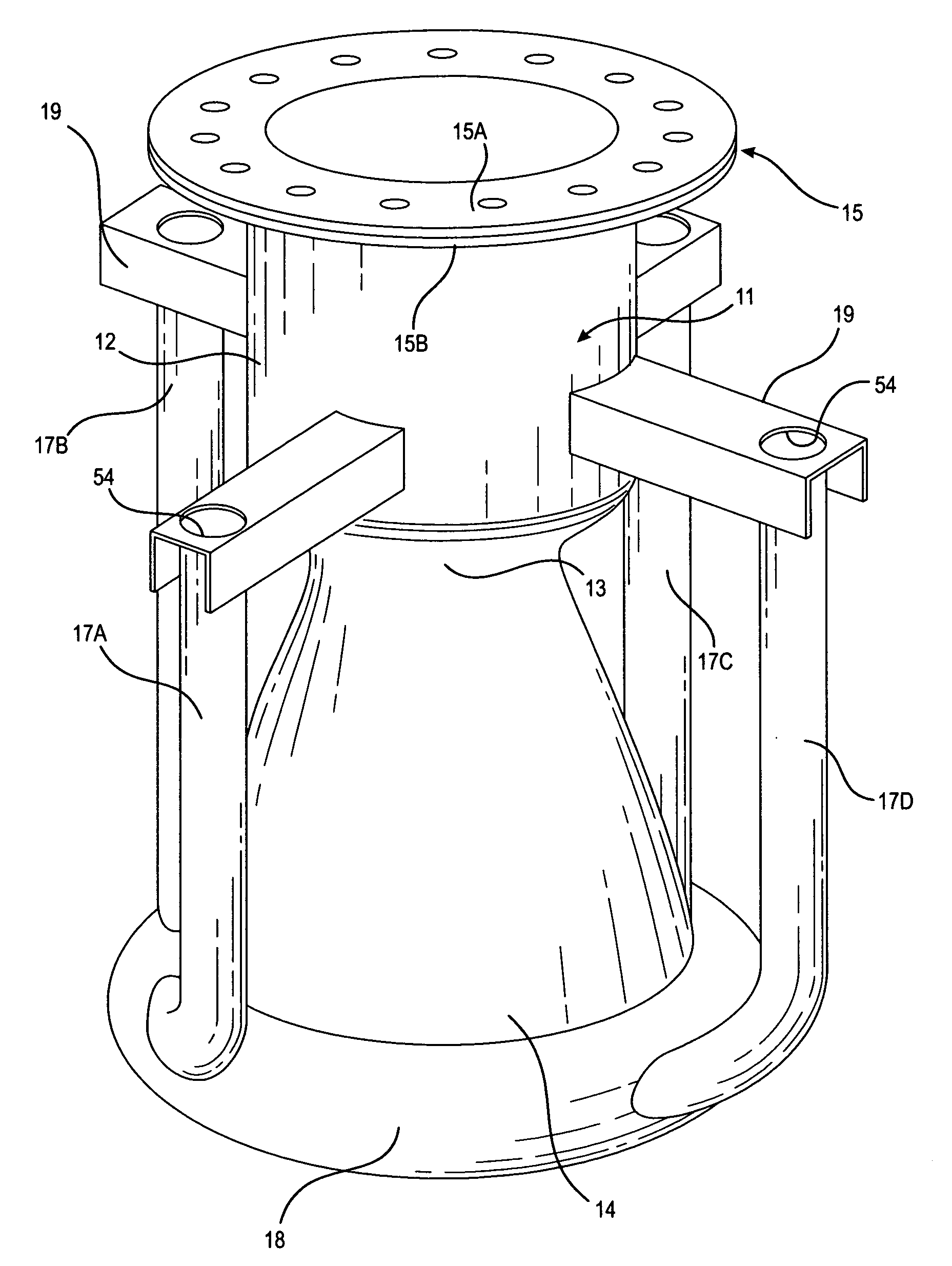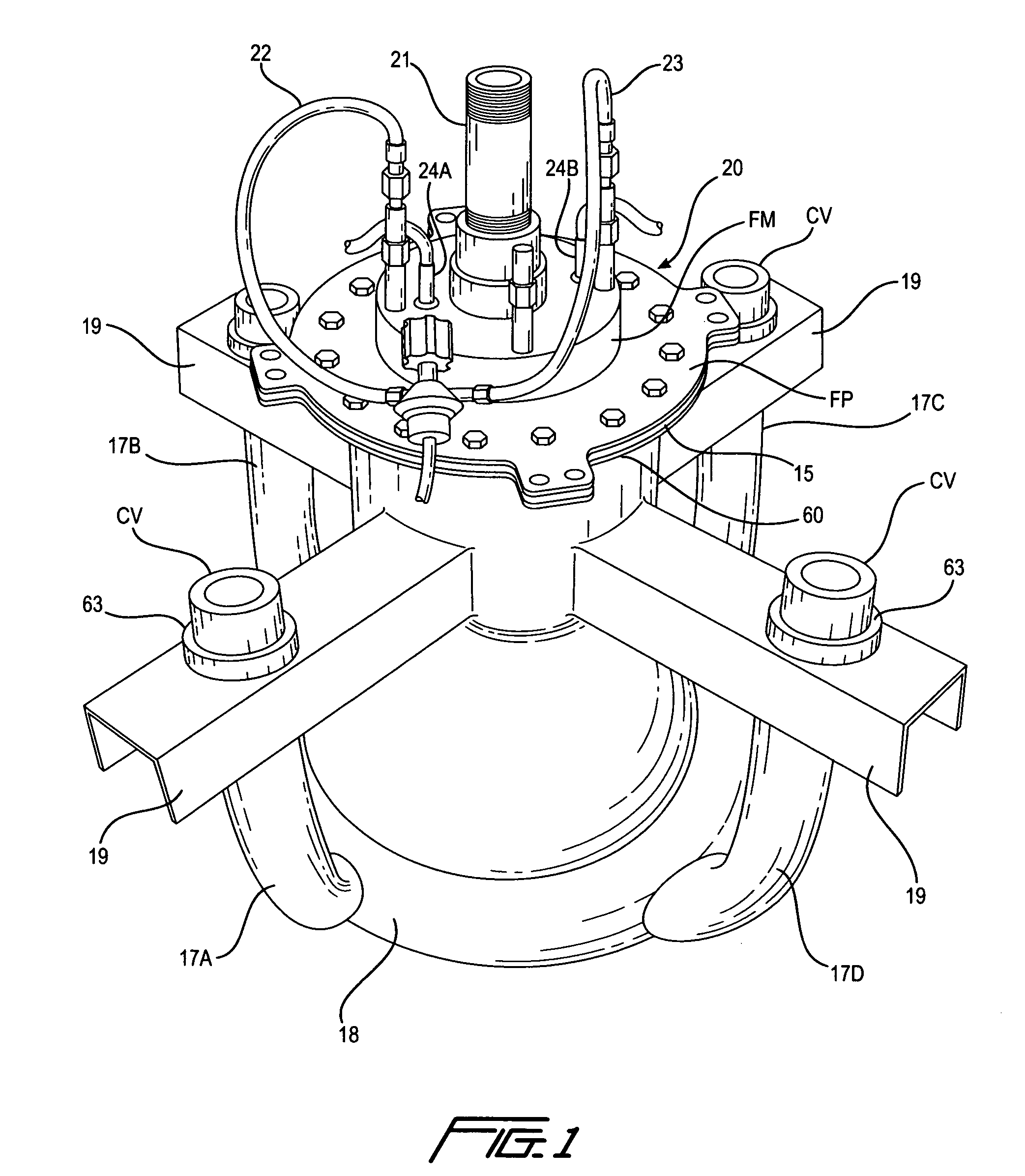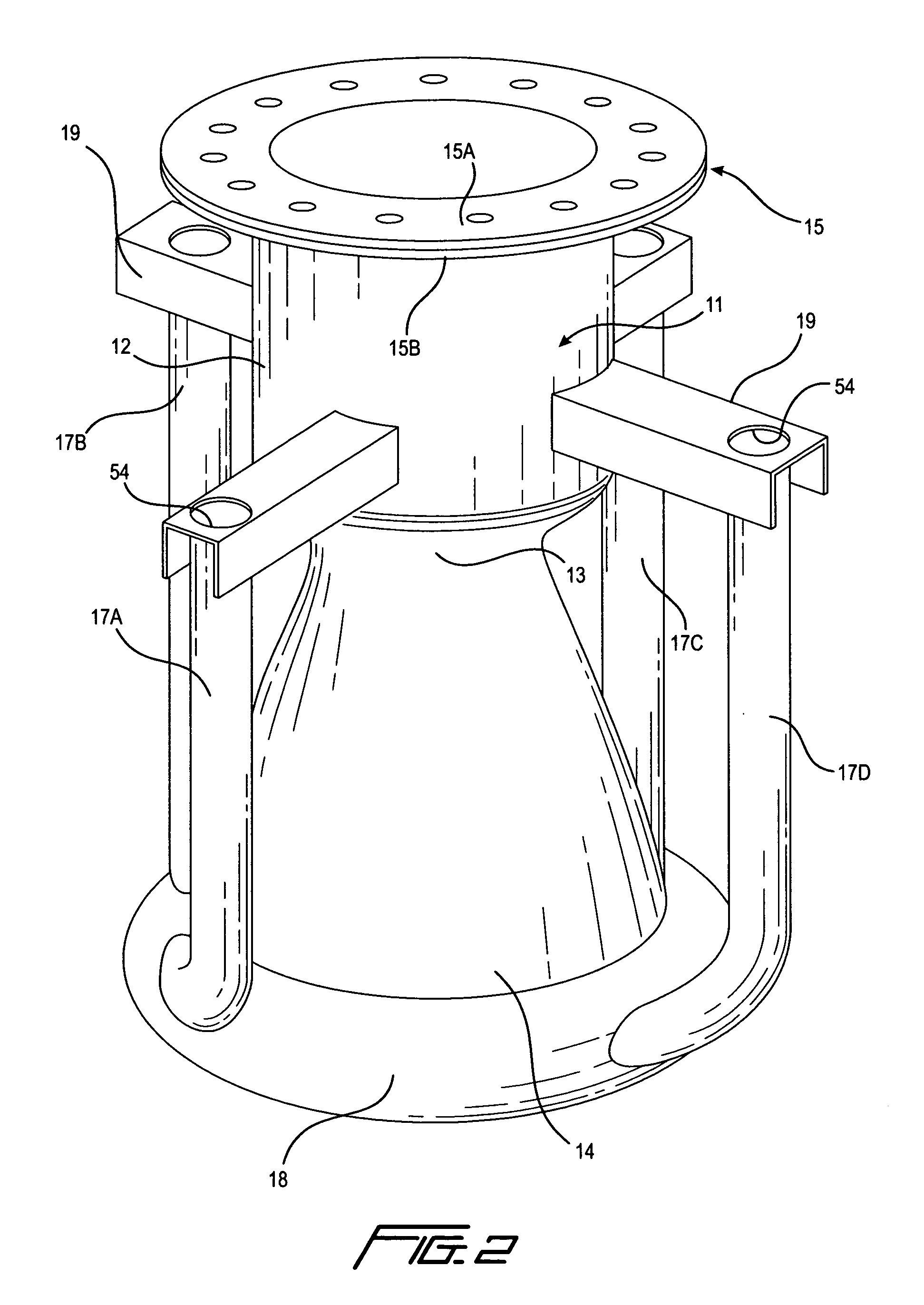Carbon-Kevlar uni-body rocket engine and method of making same
a rocket engine and carbon-kevlar technology, applied in the field of rocket engines, can solve the problems of increasing the mass of the spaceship, sudden all-over ignition, and hard start, and achieve the effects of reducing the number of oxidizers
- Summary
- Abstract
- Description
- Claims
- Application Information
AI Technical Summary
Benefits of technology
Problems solved by technology
Method used
Image
Examples
Embodiment Construction
[0045]An integrally formed one-piece rocket engine according to the invention is indicated generally at 10 in FIGS. 1 and 2. The engine 10 comprises an engine body 11 having a combustion chamber 12 of substantially cylindrical shape, a reduced diameter throat 13, and an outwardly flared exhaust bell or nozzle 14, with a radially outwardly directed upper flange 15 on its upper end and a radially outwardly directed bottom flange 16 on its lower end. The engine body is of substantially conventional shape is but formed integrally as one piece. Four oxidizer tubes 17A, 17B, 17C and 17D are provided in this embodiment, extending longitudinally of the engine and connected tangentially at their lower ends to an oxidizer ring 18 formed integrally on the exhaust bell at its bottom end, and connected at their upper ends to mounting brackets 19 that are in turn integrally connected to the combustion chamber just above the throat. This arrangement not only permits supply of oxidizer to multiple ...
PUM
| Property | Measurement | Unit |
|---|---|---|
| Fraction | aaaaa | aaaaa |
| Shape | aaaaa | aaaaa |
Abstract
Description
Claims
Application Information
 Login to View More
Login to View More - R&D
- Intellectual Property
- Life Sciences
- Materials
- Tech Scout
- Unparalleled Data Quality
- Higher Quality Content
- 60% Fewer Hallucinations
Browse by: Latest US Patents, China's latest patents, Technical Efficacy Thesaurus, Application Domain, Technology Topic, Popular Technical Reports.
© 2025 PatSnap. All rights reserved.Legal|Privacy policy|Modern Slavery Act Transparency Statement|Sitemap|About US| Contact US: help@patsnap.com



